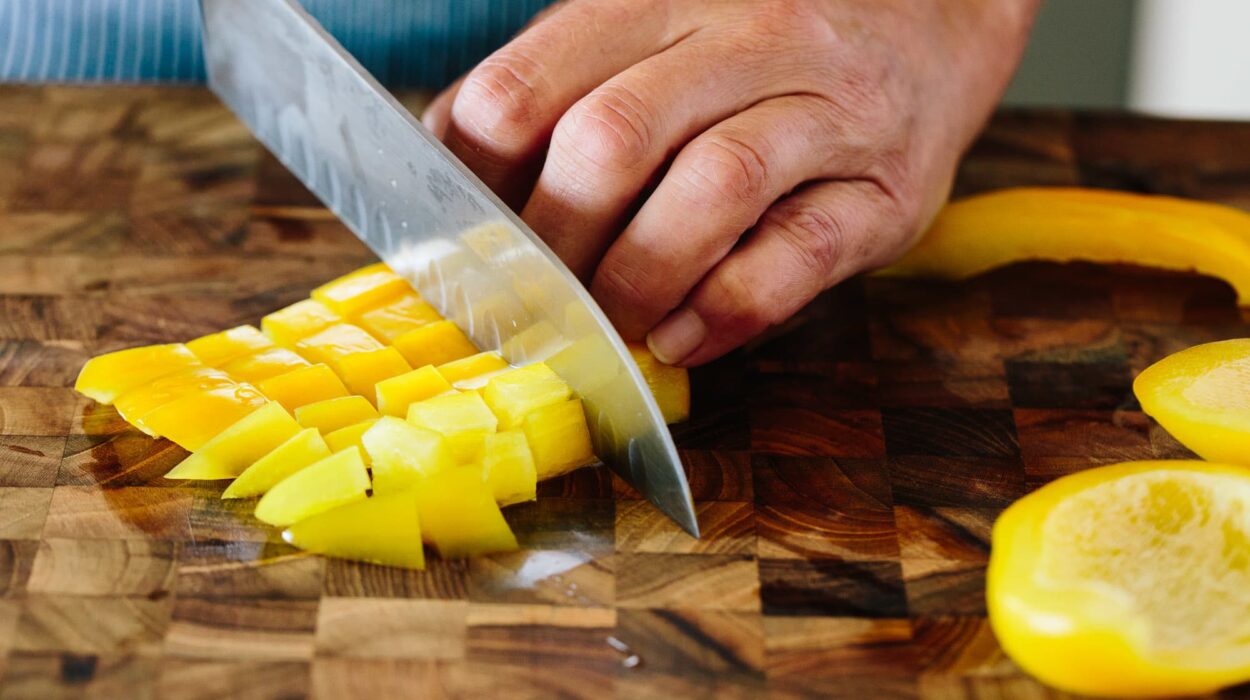Cutting boards are essential kitchen tools. Over time, they get scarred from regular use. To restore them to their former glory, you need to know how to sand cutting board properly. In this guide, we will take you through the entire process of sanding cutting boards expertly.

Why Sanding Your Cutting Board is Important
Sanding your cutting board keeps it smooth, clean, and safe from bacteria. A well-maintained cutting board also prolongs the life of your knives. It is a critical kitchen maintenance tip that all professionals and home cooks should know.
Materials You Will Need
- Sandpaper (80-grit, 120-grit, 220-grit)
- Electric sander (optional)
- Mineral oil or cutting board oil
- Clean cloth

Step-by-Step Guide to Sanding Your Cutting Board
Here is the detailed process of how to sand cutting board:
1. Preparing the Cutting Board
Before you start sanding, clean your cutting board thoroughly. Remove any food residue and wipe it dry. Clean and sanitize your board properly to ensure no moisture is left.
2. Starting with Coarse Grit Sandpaper (80-grit)
Begin with 80-grit sandpaper to remove deep cuts and scratches. If you have an electric sander, it can make the job easier. Apply even pressure and sand along the grain of the wood.
3. Smoothen with Medium Grit Sandpaper (120-grit)
Switch to 120-grit sandpaper after the initial sanding. This will further smoothen the surface and remove any remaining rough patches.
4. Finish with Fine Grit Sandpaper (220-grit)
Finally, use 220-grit sandpaper to give your board a smooth finish. This step is crucial for a polished look and feel.

Maintaining Your Cutting Board
After sanding, it’s essential to maintain your cutting board to keep it in top condition. Regular oiling is key. Use mineral oil or a specialized cutting board oil to keep the wood hydrated.
How to Oil Your Cutting Board
Apply a generous amount of oil to the surface of the cutting board. Let it soak in for a few hours or overnight. Wipe off any excess oil with a clean cloth.
Preventative Measures
To avoid frequent sanding, take preventative measures to protect your cutting board. Avoid putting it in the dishwasher and do not leave it soaking in water. Always clean and dry your cutting board after each use.
Choosing the Right Cutting Board
Not all cutting boards are created equal. The material of your cutting board can affect how often you need to sand it. Wooden cutting boards, for instance, are durable and easy to maintain. For more information on choosing the right cutting board, visit this guide on cutting board colors.
FAQs
How often should I sand my cutting board?
The frequency of sanding depends on how often you use your cutting board. Usually, once or twice a year is sufficient.
Can I use a different oil other than mineral oil?
Yes, you can use any food-grade oil, such as coconut oil or beeswax-based conditioners.
Is it necessary to sanitize my cutting board before sanding?
Yes, always sanitize your cutting board before sanding to remove any bacteria and residue.
Maintaining a cutting board is not only about keeping it clean but also ensuring it lasts for years. Sanding and oiling are simple yet effective methods to achieve this. By following these big and terrific tips, you can keep your cutting board in excellent condition.
As an Amazon Associate, I earn from qualifying purchases.


